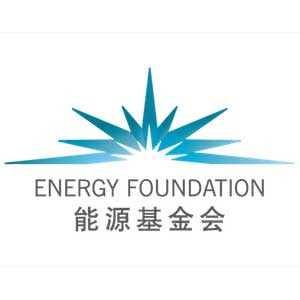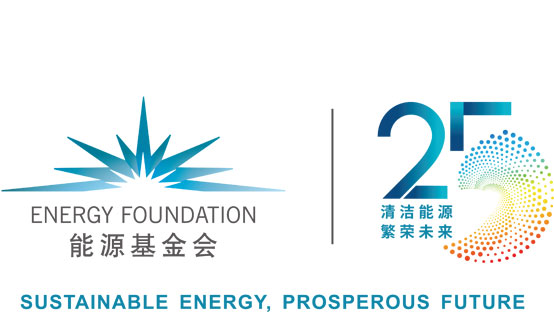Developing Renewable Energy and Electrifying Transport to Tame High Energy Prices
High Oil and Gas Prices Will Persist in the Short Term
The soaring energy prices are influenced by two fundamental factors. The first one is monetary policy. Amid the COVID-19 pandemic, regulators of developed economies, especially the Federal Reserve, has adopted massive quantitative easing programs. From the second quarter of 2020 to the beginning of this year, the volume of money printed and corresponding increases in energy prices remained large. International energy prices saw a hike not only in oil and natural gas, but also in coal. Power outages in China last year had nothing to do with the supply of coal or the capacity of thermal power; they were due to the high prices of coal and the low prices of electricity—essentially a financial shock. Besides control over the imported high coal prices, China should also consider fiscal, tax, and financial tools to alleviate the pressure of the imported inflation. The second factor is market expectations regarding oil and gas supply since the Russia-Ukraine war. Sanctions, blockades, and maneuvers have magnified energy supply uncertainties, making the situation worse. Together, these two factors have led to the current fluctuations and high prices of oil and gas.
The duration of such a situation depends on how long these factors will last: whether price control policy can be enforced continuously; how long it will take to mitigate the impact of inflation; and when the Ukraine war ends and the rebalance of supply and demand begins. Take gas as an example. Europe cannot change its importing structure overnight. It takes years to build specialized ships and refilling stations for liquefied natural gas (LNG), let alone rebuilding the pipes. Looking back at history, high oil prices lasted from 1973 to the end of the 1970s during the first energy crisis. The current situation is completely different from the 1970s, but empirical evidence shows that the high oil and gas prices may last for several years, instead of ending in a year or two.
To be independent from Russian oil and gas, European countries need to diversify their energy resources, mainly to increase their imports from the U.S. The costs will definitely rise, and reach a relatively stable level that is lower than today but higher than before the Ukraine war, the pandemic, and the inflation. Europe sets a benchmark for equilibrium prices in the global market. For quite a few years, prices in other regions will be pulled upwards by the benchmark, especially in China, East Asia, and South Asia, which are major oil and gas importers, though competition from non-fossil fuels and electrified transport will bring down oil and gas prices in the longer term.
Increasing Oil and Gas Reserves is Not the Ultimate Solution
Strategic oil and gas reserves must be beefed up; but they are not the fundamental way out.
A more feasible approach is to develop renewable and other non-fossil energy and electrify transportation, which help address energy security and climate change challenges and implies urgent need for investment. This strategic choice is already on China’s policy agenda. Stimulus packages have featured energy centers in Inner Mongolia, Qinghai, Ningxia, Hebei, and northeastern provinces, as well as power transmission lines that will send electricity to load centers in eastern and southern provinces, requiring trillion-dollar investment. The question is how we can accelerate the efforts in such circumstances.
China imports 70% of its oil and 40% of its gas consumption. Speeding up the electrification of vehicles is a priority, as land transportation consumes more than half of the oil. The current electric vehicle ownership has already reduced 2% of the oil imports. If China can electrify its transportation sector and use enough renewable energy by 2030, this small share can grow to 13%. We should consider raising this target to reduce 15% and even 20% of the oil imports, not just for climate change and air pollution reasons, but also for economic growth and energy security considerations. History shows that as long as we choose the right pathway, the market, industry, and technology will advance beyond the widest imagination of policy researchers and decision-makers.
China Can Trade With the U.S. to Diversify Its Energy Resources
Only a few places in the world supply oil or gas—Middle East, Africa, Latin America, the U.S., Russia, and Central Asia—and none is immune from risks. The China-U.S. relationship is perhaps at its lowest point since the establishment of diplomatic ties, with small chance for major improvement in the next 15 to 20 years. Through oil and gas trade between China and the U.S., we can create shared interests and hedge against risks. The two countries have always maintained trade relations, notably in LNG. I once proposed to strengthen the bilateral gas trade, when China was fighting smog. Oil and gas remain a focus of trade negotiations between China and the U.S. By creating shared trade interests, the two sides are bound together, though we should take into consideration of geopolitical tensions in the next five to 15 or even 20 years.
Non-Fossil Fuel Deployment and Transport Electrification Are the Way Out
China should accelerate non-fossil fuel deployment, which can help achieve multiple goals including economic growth, energy security, climate mitigation, air improvement, rural revitalization, and income increase. When hundreds of millions of rural residents join the mid-class, they will have huge demand for energy, which must be met with non-fossil fuels. Seizing the time window of soaring fossil fuel prices, China should grow its annual investment in renewables from $80 billion in previous years to $100 billion, or even $140 billion. In the meantime, China should speed up transportation electrification. Bigger cities and more developed regions such as the Yangtze River Delta and the Pearl River Delta can set their timetables for limiting or banning the sales of internal combustion engine vehicles, sending a clear signal to carmakers, investors, and researchers. To improve the sector’s competitiveness and export electric vehicles to the international market, China should raise its electrification goals, standards, manufacturing capacity, and productivity now.
Deploying electric vehicles and charging infrastructure encourages investment and consumption—both good for the economy. In the past half year, electric vehicles sales in China witnessed robust growth, despite a decline in all vehicle sales. In addition, the shift from highway transport to railway or water transport can reduce the usage of diesel-fueled heavy-duty trucks, which are major fossil-fuel consumers.
China is likely to witness major changes in the next decades through developing renewable energy and electrifying transport, while energy price control in the short term can help reduce inflation triggered by the soaring prices of commodities amid a slowed down economy. It is necessary to deepen the market-oriented energy reform with a clear goal—guiding new investment and R&D into non-fossil fuels.
China can learn from Japan’s experience of coping with the oil crisis in the 1970s. Depending on energy imports, Japan took 10 to 20 years to form a high efficiency economy that could ride out uncertainties in international energy supply. China should value energy efficiency as well, and adopt a national strategy for it. Today’s springboard to higher efficiency is the digital economy. We should strive to improve energy efficiency by 10%–40% in industrial and building sectors by 2030. China can put an end to the current energy crisis by seizing the window of opportunity from the next five years to 2030. The time to act is now.




